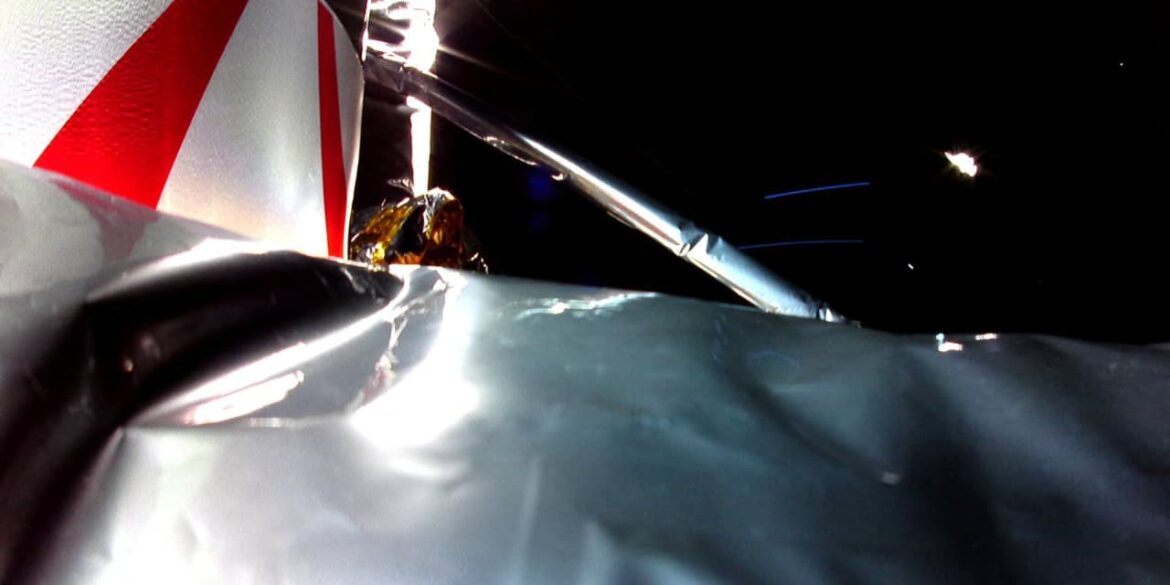
The first U.S. commercial moon lander is facing a race against time after suffering a failure in its propulsion system just hours into its historic mission.
Astrobotic Technology, which built the Peregrine lunar lander, is now attempting to get the spacecraft as close to the moon as possible before it loses power. Peregrine’s mission to reach the moon, which was expected to happen on Feb. 23, now appears doomed.
“An ongoing propellant leak is causing the spacecraft’s Attitude Control System (ACS) thrusters to operate well beyond their expected service life cycles to keep the lander from an uncontrollable tumble,” the company said in a statement late Monday. “If the thrusters can continue to operate, we believe the spacecraft could continue in a stable sun pointing state for approximately 40 more hours, based on current fuel consumption.” The spacecraft’s sun-pointing position is critical for the operation of its solar panels.
Related: Private lunar lander’s historic moon mission in jeopardy amid ‘critical loss of propellant’
“At this time, the goal is to get Peregrine as close to lunar distance as we can before it loses the ability to maintain its sun-pointing position and subsequently loses power,” Astrobotic added.
The Peregrine lunar lander launched atop the first Vulcan rocket early Monday, successfully separating from the rocket’s Centaur upper stage about 51 minutes after launch. Peregrine’s goal was to enter into orbit more than 220,000 miles above Earth, where it was supposed to intercept the moon.
But sometime after separation, “an anomaly then occurred, which prevented Astrobotic from achieving a stable sun-pointing orientation,” the company said in a statement released about seven hours after launch.
Related: These are the space stocks to keep an eye on in 2024
The company subsequently described a failure in the lander’s propulsion system as the apparent cause of the anomaly, placing the moon mission in jeopardy.
“The team is working to try and stabilize this loss, but given the situation, we have prioritized maximizing the science and data we can capture,” Pittsburgh-based Astrobotic said, in a statement. “We are currently assessing what alternative mission profiles may be feasible at this time.”
The Peregrine mission is part of NASA’s Commercial Lunar Payload Services initiative to deliver science and technology to the moon’s surface. Peregrine, which is carrying NASA scientific instruments to study the lunar surface.
“We are working with @Astrobotic to identify the root cause of the propulsion issue and evaluate how it affects NASA’s five science investigations aboard the spacecraft,” tweeted NASA Monday. “Space is hard.”
Related: SpaceX IPO could come as soon as 2025 or 2026, says money manager Vijay Marolia
Peregrine is also carrying a payload from Celestis Memorial Spaceflights, which sends cremated human remains into space. The payload is dubbed the Tranquility Flight. Celestis did not return a request for comment on the Peregrine lunar lander anomaly.
Other countries have been ramping up their efforts to send landers to the moon, with a Japanese spacecraft set to reach to the lunar surface later this month. The Smart Lander for Investigating Moon (SLIM) was launched Sept. 6 from the Tanegashima Space Center. The lander was successfully inserted into lunar orbit at 12:51 am ET on Dec. 25, according to the Japanese Aerospace Exploration Agency (JAXA), and is expected to land on the lunar surface at 10:20 am ET on Jan. 19.
Related: Musk’s SpaceX hits rocket milestone in latest Starlink Falcon 9 launch
While the Peregrine lunar lander has faced problems on its mission to the moon, the maiden flight of United Launch Alliance’s Vulcan rocket was a success. The CERT-1 flight test marked an important milestone for SpaceX rival United Launch Alliance, which was set up in 2006 as a joint venture between Boeing Co.
BA,
and Lockheed Martin Corp.
LMT,
“Congrats to @ulalaunch on the first flight of #Vulcan!” tweeted NASA Administrator Bill Nelson on Monday.
“MAJOR congratulations to the @ulalaunch team who successfully launched the first ever #VulcanRocket this morning! We can’t wait to see more of these epic rockets in action,” tweeted Lockheed Martin Space on Monday.

